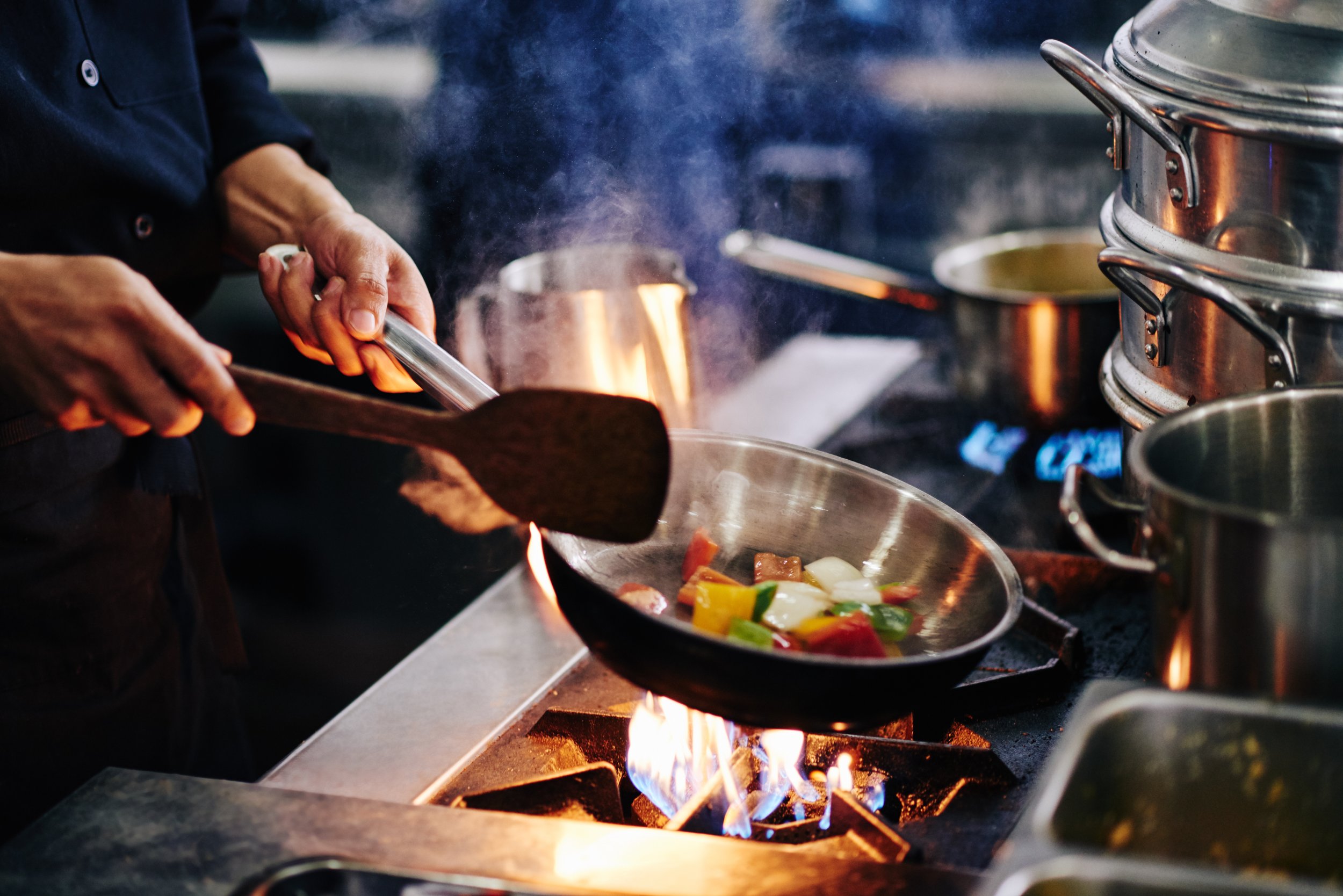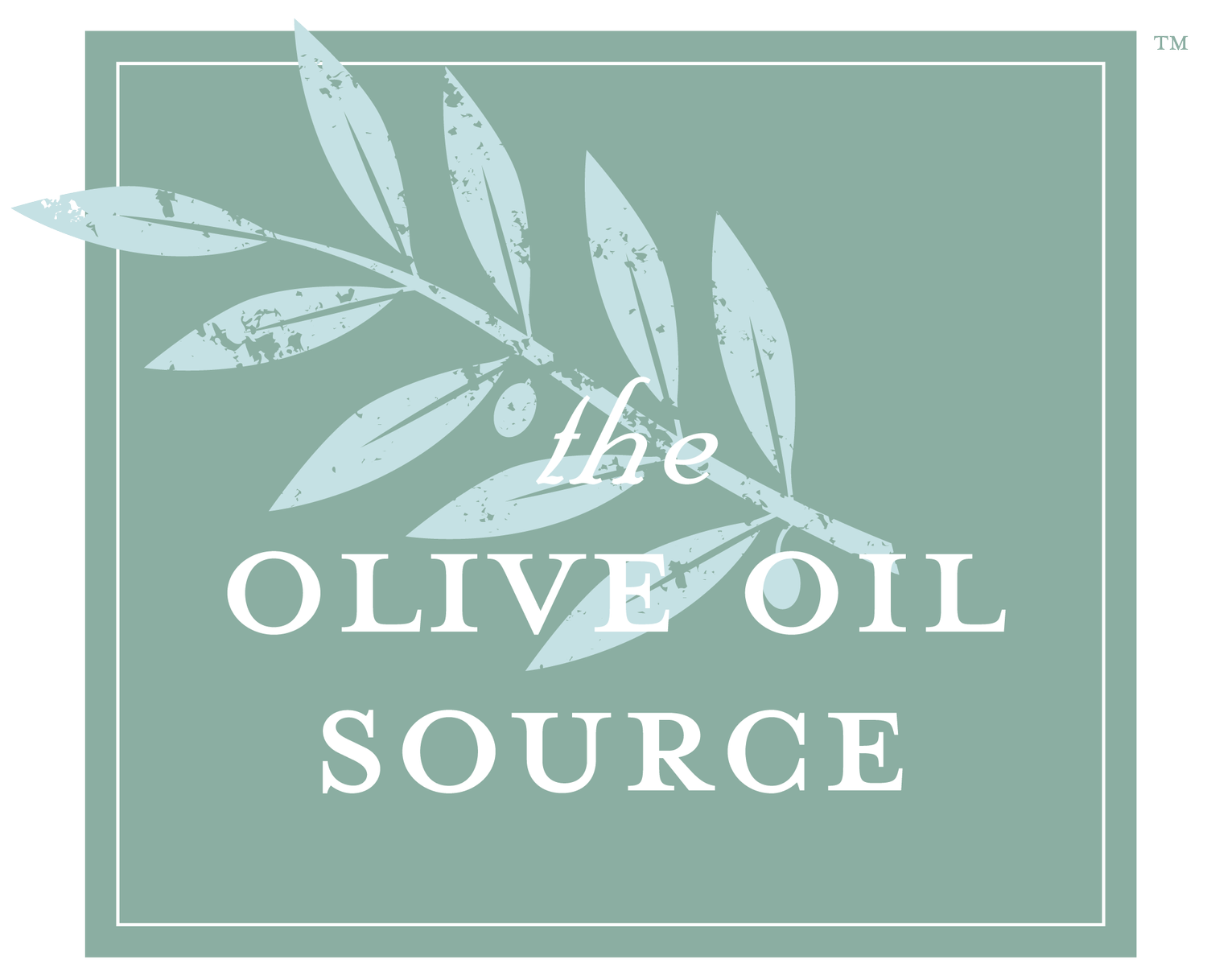
Heating Olive Oil
HEATING OLIVE OIL AND SMOKE POINT
One of the questions we are asked most often is what happens when olive oil is heated and/or used for frying. The important thing about cooking with any oil (olive or otherwise) is not to heat the oil over its smoke point (also referred to as smoking point). The smoke point refers to the temperature at which a cooking fat or oil begins to break down. The substance smokes or burns, and gives food an unpleasant taste. But what is the smoke point of olive oil? Depending on where you look for an answer, you may get vastly different ideas.
Relationship between Smoke Point and Quality of Olive Oil
The smoke point of oil varies with its quality. High quality extra virgin olive oils (with low free fatty acids) have a high smoke point. They are an excellent choice, but an expensive one. Mass produced, low quality olive oils have a much lower smoke point. Please note that we are talking about virgin oils, here, not chemically refined oils.
At The Olive Oil Source, we believe that extra virgin olive oil smokes roughly between 400 and 365ºF (204 and 185ºC) depending on its free fatty acid content. Here is what the International Olive Oil Council (IOOC) has to say about frying food with olive oil:
When heated, olive oil is the most stable fat, which means it stands up well to high frying temperatures. Its high smoke point (410ºF or 210ºC) is well above the ideal temperature for frying food (356ºF or 180ºC). The digestibility of olive oil is not affected when it is heated, even when it is re-used several times for frying.
As a reference point, the table from the IOOC shows standard cooking temperatures:
How does Olive Oil Compare with Other Cooking Oils?
The table below shows the smoke point of a few other cooking oils. Keep in mind that the smoke point for a vegetable oil will vary according to the variety and growing conditions, and how the oil was produced. Various manufacturers and sources cite different numbers.
Having read all of the above, you may be fairly confused by now. Dr. John Deane wrote the following excellent article about the smoke point of olive oil and various cooking considerations. This is the most comprehensive discussion of smoke point that we know of.
Smoke Point of Olive Oil by John Deane (updated 09/20/2007)
Pumpkin seed oil, avocado oil, borage and camellia oil; it used to be that a choice of oil for cooking was simple. You used a liquid canola or corn oil for frying or sautéing and a hardened oil such as Crisco for baking. We now live in the age of boutique oils. All seeds have oil in them as the energy source for the growing seedling. Man's ingenuity and desire to create a niche market has led to the extraction of many unusual oils.
The marketing angles on these oils are manifold. Some claim to have health benefits, others to have flavor. Buyers of argan and shea butter oils may be supporting women's cooperatives in developing nations. Hemp seed oil diehards are sticking it to the man. Grapeseed oil has the romance of the vine. JoJoba oil is a earth friendly alternative oil. While it is hard to compare or argue some of these points, there is one point which should be easy for comparison: the smoke point.
A high smoke point is desirable for a cooking oil. When frying, best results occur when the oil is very hot. The food is placed into the hot oil and the natural sugars caramelize and proteins denature into a thin shell which protects the food from soaking up the oil. The outside is crisp and the interior is just cooked. One of the bibles of cooking, Irma Rombauer's The Joy of Cooking recommends frying at 365ºF for best results.
When heated oil smokes, it is not just a nuisance. Besides coating your home interior with a varnish like substance, where there's smoke there's fire. An oil at its smoke point is closer to its flash point - the point where it will burst into flame.
So a high smoke point is one yardstick for a “good oil” If you go to the internet or the market to look for smoke points you will see something interesting. Every oil claims to have the highest smoke point. One website for macadamia nut oil puts their oil at the top of the list with a smoke point of 410ºF. On their chart, olive oil comes in at a measly 190ºF. This is below the temperature of a hot cup of tea! Avocado oil sites say their oil has the highest smoke point and claim nut oils are terrible for frying.
The smoke point for a vegetable oil will vary according to the variety and growing conditions, and how the oil was produced. The smoke you see may be impurities in the oil which are burning. Unfiltered olive oil has small bits of olive in it. When the oil is heated these bits will burn and smoke before the oil itself. A well-filtered or clarified oil will have a higher smoke point generally.
Oil which has oxidized because of exposure to air, heat and light will have a lower smoke point. Using oil repeatedly will also make it smoke sooner. When looking for the smoke point of an oil you should expect a range of values. The Olive Oil Source claims that extra virgin olive oil smokes from 400 to 365ºF, according to its free fatty acid content. But the macadamia nut folk say that olive oil smokes at the temperature of hot water out of the tap. When I suggested to the macadamia people that it seemed unlikely that olive oil smokes at temperature lower than boiling water and that maybe they were confusing centigrade with Fahrenheit they insisted they were right.
So who do you trust for the real smoke point? The industry group which is advertising and promoting the oil, a random website or a food chemistry text? Here is what some research yielded:
The International Olive Oil Council: 410ºF
Institute of Shortening and Edible Oils: 420ºF
Or why not get some olive oil off the shelf and heat it up in a saucepan with a frying thermometer. This is properly done in a lab with special lighting which shows the first hint of smoke. My stovetop experiment yielded 350ºF for a jug of discount store oil which had been sitting open in the garage for a few years and 380ºF for a premium fresh extra virgin oil. Olive oil is fine for frying.
It is annoying to counter these conflicting claims when most people would not fry with olive oil anyway. A cheap, flavorless oil with a high smoke point is usually recommended - something like canola, soy or peanut oil. Avocado, macadamia and premium olive oils can cost up to a dollar per ounce. It is unlikely that you are going to deep fry that Thanksgiving turkey in 5 gallons of oil at that price.
Besides, if we are so worried about our health, why fry at all? Better to talk up the flavor qualities of olive oil, an area where it shines compared to bland seed oils.
An excellent resource with voluminous bibliography is a monograph entitled "Frying Food in Olive oil" by Gregorio Varela, Professor of Nutrition, Madrid University. It is available from the International Olive Council (IOC).
Buy Extra Virgin Olive Oil
~
Buy Extra Virgin Olive Oil ~
MYTHS ABOUT COOKING WITH OLIVE OIL
There are some myths that have recently circulated about olive oil that we are constantly answering via email and our newsletter. Following are the two most common.
Myth: Heating Olive Oil Will Make it Saturated or Trans-fatty.
One common myth is that heating olive oil will make it saturated or trans-fatty.
This is not true. As far as making a saturated fat, according to Dr. A. Kiritsakis, a world renowned oil chemist in Athens, in his book Olive Oil from the Tree to the Table -Second edition 1998, all oils will oxidize and hydrogenate to a tiny degree if repeatedly heated to very high temperatures such as is done in commercial frying operations. Olive-pomace oils and virgin olive oils are both highly monounsaturated oils and therefore resistant to oxidation and hydrogenation. Studies have shown oxidation and hydrogenation occurs to a lesser degree in olive oil than in other oils. But in any case, the amount of hydrogenation is miniscule and no home cook would ever experience this problem.
The large refinery-like factories that take unsaturated vegetable oil and turn it into margarine or vegetable lard do so by bubbling hydrogen gas through 250 to 400ºF (121 to 204ºC) hot vegetable oil in the presence of a metal catalyst, usually nickel or platinum. The process can take several hours. You cannot make a saturated product like margarine at home by heating olive oil or any other vegetable oil in a pan. We don't know where this weird notion has come from. For more details, see Olive Chemistry.
Changing a cis-fat to a trans-fat does not occur on a home stove.
Myth: Cooking in Olive oil Diminishes The Nutritional Value of the Food.
Another myth is that cooking in olive oil diminishes the nutritional value of the food. This a misconception. The fact is that heating food will break down its nutritional value. High heat such as frying is worse than moderate heat such as steaming, which is worse than eating vegetables raw. It is not the cooking oil per se, but the high heat of frying. We are not aware of any edible cooking oil which by itself diminishes the nutritional value of the food cooked in it. Most nutritionists recommend lightly steaming vegetables or eating them raw. A touch of a flavorsome extra virgin olive oil added at the table will add taste and healthful anti-oxidants. Such is the Mediterranean diet which has been shown to help prevent coronary disease and have other health benefits.



